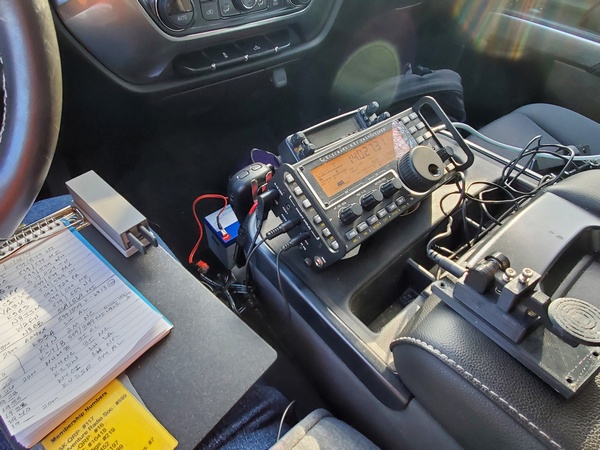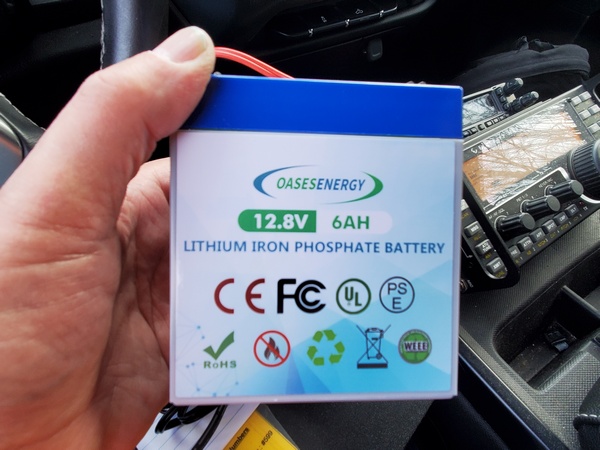Heading out for some portable operations yesterday, I had a few objectives in mind. First, I needed to take some pictures of an antenna mount for an article I’m working on. I also wanted to do a POTA activation, while also making some Winter Field Day (WFD) contacts. Lastly, I wanted to try out an inexpensive LiFePO4 battery I recently purchased.
I planned to do all this stuff while at Ridley Creek State Park (K-1414, KFF-1414). I started off by setting up to take the pictures for the article. After getting the shots I needed, I set up to get on the air. Today, I was using my KX3 (5 watts CW) and 12-foot loaded whip. I also had a 29-foot vertical wire fed through a 9:1 unun.

I finished setting up about 10 minutes before WFD kicked off, so I started calling “CQ POTA” on 30M. By the time WFD started, I had the required 10 POTA contacts in the log. After marking myself as “QRT” on the POTA spotting page, I started “searching and pouncing” on the bands. I was hunting for WFD, POTA, or anything else that seemed interesting.
After a little under two hours, I wrapped up with 25 contacts in my log. Thirteen of them were WFD contacts. I also had a park-to-park QSO with AA4XX down in North Carolina. It’s always a pleasure to work Paul. A Straight Key Century Club contact with K3Y/8 rounded out my log.
The battery I was using today was a 6 Ah LiFePO4 battery I found on Amazon for about $20 (US). My trusty Bioenno batteries are still hanging tough after more than six years of use, but I was curious to see how this cheap battery would work. It did just fine, but we’ll see how it holds up over time.

With some welcomed mild weather yesterday, this wasn’t the most wintry of Winter Field Days here in Pennsylvania. I wish I had more time for it this weekend, but life had other plans for me. Best of luck to everyone taking part in WFD.
73, Craig WB3GCK




